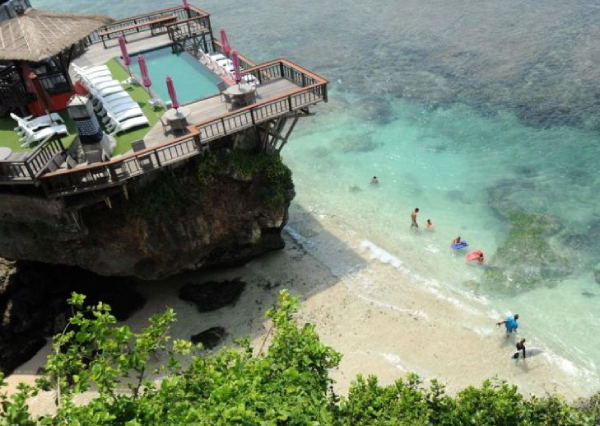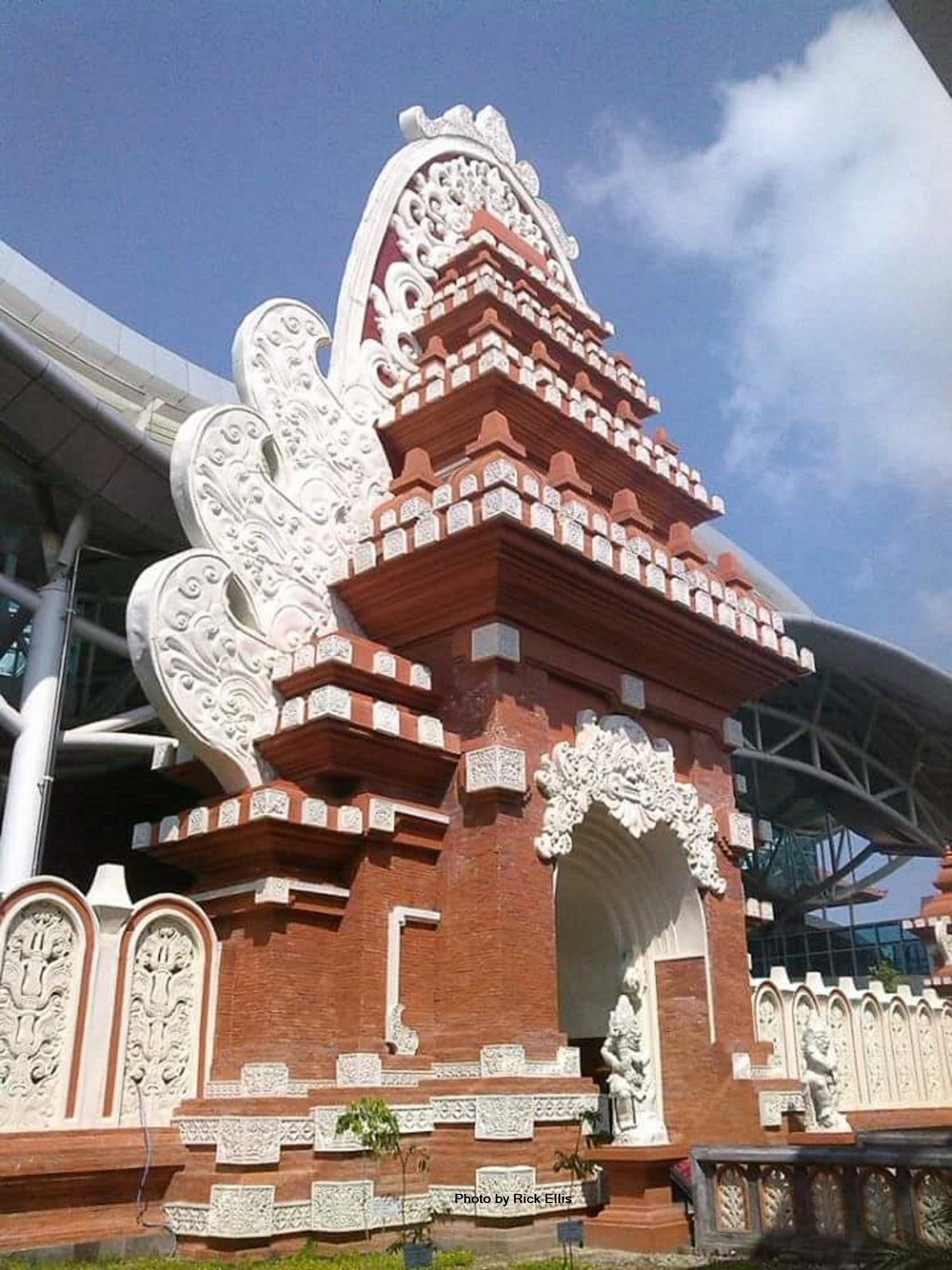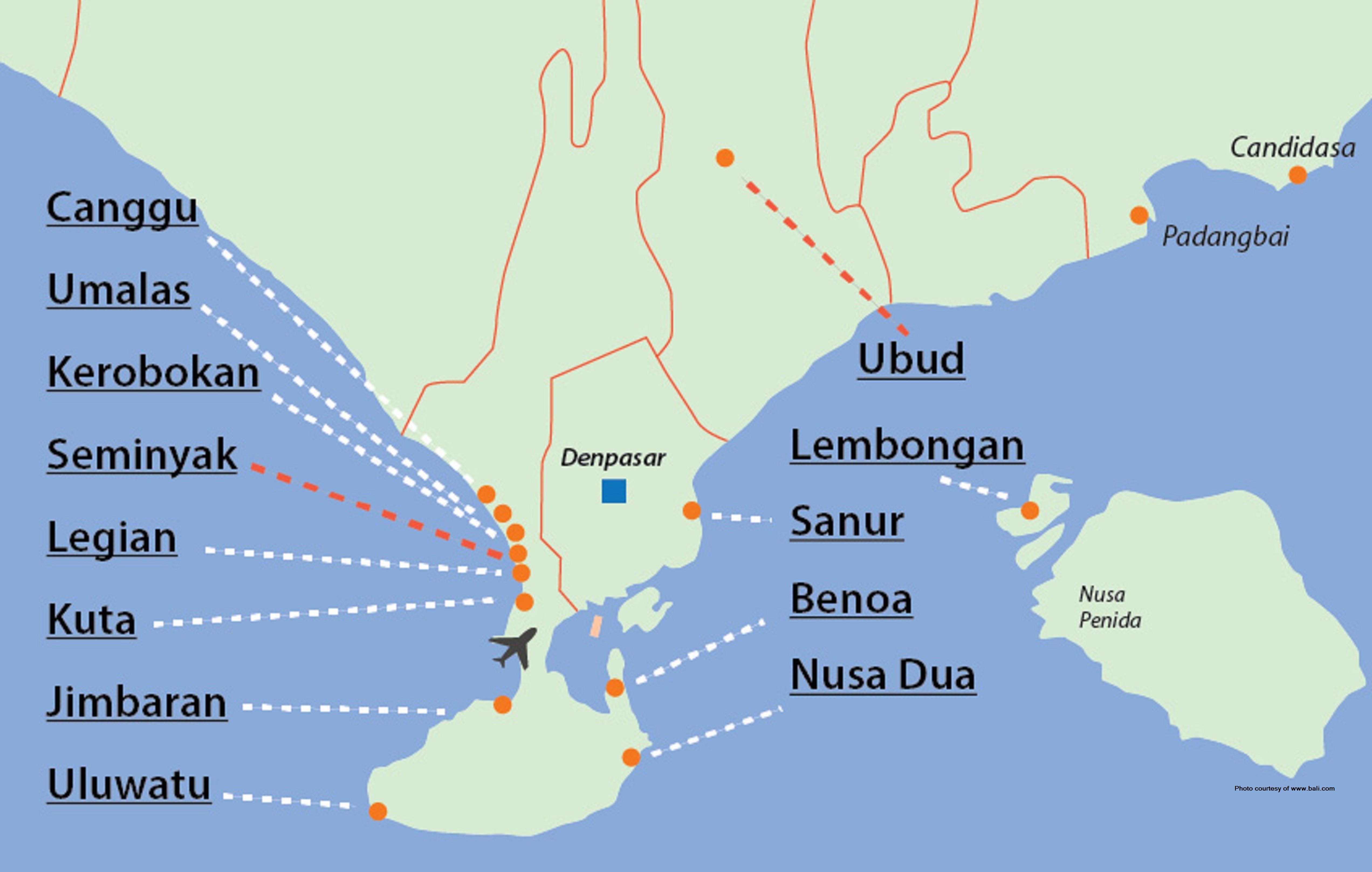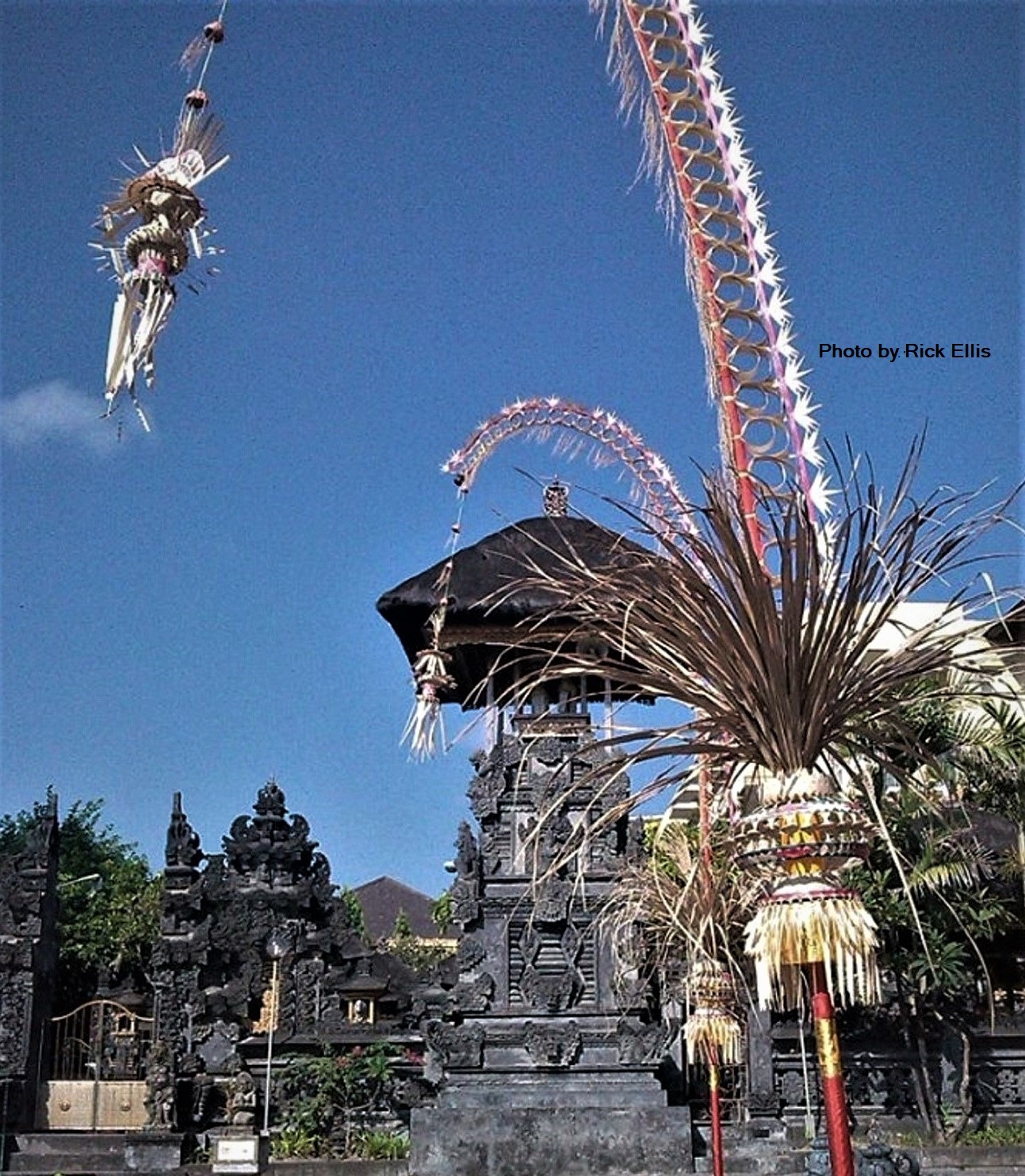Tired of those boring group tours? Sick of following the crowd around, eating bland food in big, impersonal restaurants, and moving at a snail’s pace with little excitement and adventure?
The era of the Vietnamese FIT (Free and Independent Traveller) is upon us!
Just take the leap and arrange your trip yourself using reliable first-hand information. I will help with your trip planning because I lived on “The Island of the Gods” for over a year before settling in Vietnam.
Bali is in the top handful of destinations I’ve visited during all my travels because it’s totally unique. Where else could you find a Hindu enclave in a predominantly Islamic country with unique culture as deep as a well, kick-back lifestyle, beautiful beaches, topnotch tourist sites, and great food?
The great news in Vietnam is in April VietJet Air introduced new non-stop direct flights between Ho Chi Minh City and Bali.
Bali is not just beaches, barbecues, surfing, and party time like many exotic island destinations in the world. True, it’s the getaway spot for many Australians thanks to its proximity and the Aussies do love to party, but that’s just the tip of the iceberg….
Balinese culture is omnipresent from clothing, ornaments, and ceremonies to music and breathtaking temples and shrines that you’ll see every few meters on the island. It starts at Ngurah Rai airport in Denpasar when you arrive, which was constructed in the form of an enormous Balinese Hindu temple, the first symbol of the endless obsession with beauty and symmetry found all over the island.
|
|
| Ngurah Rai Airport in Denpasar |
None of the culture is in our faces, rather it envelops us like a warm hug, reflecting the serenity and contentment of the Balinese people. The Balinese are warm and welcoming by nature, and make an extra effort to welcome visitors, especially given the importance of tourism to their livelihood.
The Balinese flavour of Hinduism is not just a religion, it’s a complete way of life for 85% of the island’s residents, so visitors see and feel it every step of the way.
Getting there
The new VietJet Air non-stop flights are scheduled five times weekly from Ho Chi Minh City to the capital Denpasar. Flights are four hours in duration with the outbound flight departing Ho Chi Minh City at 8:05, and the return flight from Bali leaving at 14:05 arriving in Ho Chi Minh City at 17:05 (Bali time is one hour ahead of Vietnam).
Holders of Vietnamese passports do not need a visa for stays of up to 30 days in Indonesia, nor do passport holders from over 160 other countries worldwide. The first counters you’ll see inside the arrival hall are for visitors wanting visas on arrival - just walk right by them, no need to pay anything, and continue to the string of counters staffed by immigration officers.
The Indonesian rupiah has denominations very similar to Vietnam dong, plus coins are used for small amounts. The dong is worth roughly 60% of the rupiah, so that means a low-end meal or a coffee that cost IDR30,000 is equal to VND50,000.
Make sure you have an ATM card with a Cirrus logo and your bank has activated your card for international use. Be sure to take a credit card so you have a back-up. I have more do’s and don’ts in Part 2 of this series, so keep your eye out for that.
Getting around
After you snake your way through the winding corridors of the shopping mall after customs and immigration at Ngurah Rai International Airport, you’ll come to the large arrival hall and immediately be besieged by countless taxi drivers, similar to international arrival sections at Tan Son Nhat International Airport in Ho Chi Minh City.
Best to keep it simple as a first-time traveller and ask your hotel to send a driver for a pre-arranged fixed price when you make your reservation, certainly a bit higher than the market rate, but without any risk of drama or confusion.
Grab dominates the ride-sharing scene and works just fine, as do taxi meters if the driver is willing to use his meter instead of establishing an inflated price, which many drivers do. If you go with Grab, best to walk over to the domestic terminal for the easiest pick-up as there have been tensions between Grab and local taxi drivers on the international side.
I’ve often taken the elevator from arrivals up to departures and hailed a taxi that has just dropped off departing passengers. Just be sure that the meter is operational before getting inside.
Renting a motorbike is extremely dangerous and not recommended. So many vacations have been ruined by accidents and hospital bills that the flexibility a motorbike offers is definitely not worth the risk. The roads on Bali are just as dangerous and unpredictable as Vietnam, so motorbikes are not for newbies.
Metered taxis are abundant and reasonably priced for getting around during your stay, and inexpensive “Kura Kura” buses ply various routes around the touristic center of the island.
The core tourist area stretching northward from Tuban (the village surrounding the airport) to Canggu spans about 14 kilometers, so many neighbourhood trips can be made on foot or with a short taxi ride.
The main tourist destinations on Bali
|
|
Tourist areas of Bali
Kuta is the hub of tourism on Bali featuring its main street Jalan Legian (jalan means “street” in Indonesian), which originates just north of the airport and runs parallel to Kuta Beach.
Kuta is a hive of activity, especially at night, where it is home to some of the liveliest bars and clubs you’ll find anywhere. Once you’ve ventured from Jalan Legian, it’s a maze of small streets and “gangs” (alleyways) full of parties and people. Think of Kuta as the Bui Vien Street of Bali - lots of fun, but where scams and snatchings are frequent, so be vigilant at all times, particularly as the evening wears on.
Kuta is also home to some great dining and shopping areas as well as hotels and truly covers all budgets from backpackers to luxuries and everything in between. Kartika Plaza and nearby Lippo Mall in southern Kuta have just about everything you’d want shopping-wise, as well as a great array of hotels and nice dining nearby.
Jalan Pantai (Beach Road) runs right beside Kuta Beach for 1.5 kilometers north to Legian. Kuta Beach itself is not particularly attractive due to all the vendors but there are wall-to-wall food and shopping options on the east side of the street including the open air Beachwalk Mall.
The scene becomes progressively tamer as you head out of Kuta, starting with Legian just to the north. Legian is touristy, yet great for families given the peaceful beach and wide selection of places to sleep, eat, and shop.
The next beach town to the north is Seminyak, home to many Europeans and their Euro-style cafés and restaurants. The southern part of Seminyak around Jalan Arjuna is referred to as Double 6 and has a large, relaxing beach with terraced restaurants and cafés galore.
Seminyak has a bit of everything including the Bintang supermarket, home to just about anything you need from clothes, food to household items.
The central part of Seminyak is clustered around Jalan Camplung Tanduk, headquarters for good food, lodging, and a nice beach just north of Double 6. The northern part of town features Seminyak Square and its shopping and dining options. As you go further north to Umalas and Canggu, the scene is more residential, exclusive, and upmarket.
There are a couple of laid-back, romantic, and enticing towns south of the Kuta hubbub: Sanur, Nusa Dua, and Jimbaran. For those who want to unplug and enjoy a peaceful break, any of those three is ideal.
Temples and religious sites
|
|
| “Penjor” ceremonial bamboo pole |
The above penjors appear a few times a year for special Balinese ceremonies. Other religious ceremonies are a common occurrence on the island along with funerals and special family processions. Foreigners are welcome to enjoy but may not disrupt the proceedings.
The entire island is so unique and well preserved it’s like stepping into a museum. These are some of the top sights to visit on Bali:
Tanah Lot, north of Canggu
- Uluwatu, in the southwest corner of the island. (You’ll pass by the village of Jimbaran and its beautiful beach-side restaurants for sundown dinners.) Garuda Wisnu Kencana is a great cultural park also in the area.
- Besaki Temple is gorgeous, but somewhat distant and near Mount Agung and its volcano, which has been active in recent years, so check before going.
- The city of Ubud is a spiritual center a couple of hours north of Kuta at an altitude of 600 meters, somewhat like a Balinese version of Da Lat in Vietnam.
The big issue is transportation as the distances are relatively large and the roads are congested and often dangerous outside built-up areas. Public transportation is sparse, especially outside the most built-up central areas, so the only realistic option is a taxi. Taxis generally go for VND900,000-1.1 million per day, just be sure to get a local Balinese driver.
Be sure to wear conservative clothing that covers arms, shoulders, and legs when entering temples.
One approach is to break the trips up by area - e.g. Tanah Lot, Canggu, and surrounding areas, then Uluwatu and Garuda Wisnu Kencana.
Next up in Part 2 in this series is a detailed rundown on accommodation, food, and nightlife.






















































